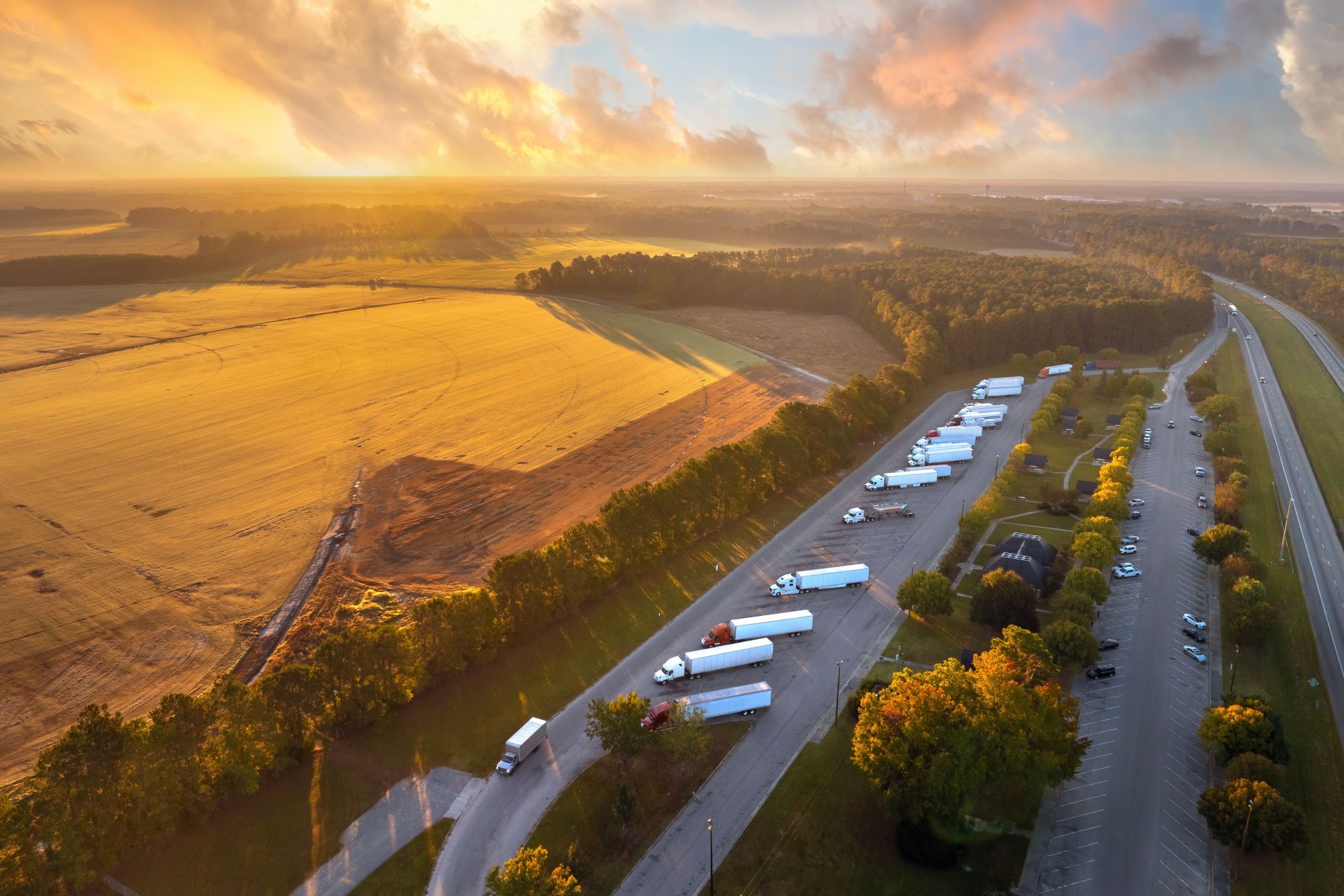
Guest
Jak zostać kierowcą ciężarówki
Utworzony: 26.09.2025
•
Aktualizacja: 26.09.2025
W całej Europie zapotrzebowanie na zawodowych kierowców ciężarówek nigdy nie było wyższe. W Wielkiej Brytanii Road Haulage Association szacuje, że w ciągu najbliższych pięciu lat potrzebnych będzie 200 000 nowych kierowców ciężarówek, aby utrzymać ciągłość łańcuchów dostaw. Sytuacja jest taka sama w całej Europie. Według danych Międzynarodowej Unii Transportu Drogowego (https://routinguk.descartes.com/resources/report-warns-of-european-shortage-of-hgv-drivers) w 2024 r. w całej Europie było 426 000 nieobsadzonych stanowisk kierowców.
Stwarza to jednak pewną szansę. Jak już wcześniej informowaliśmy (https://snapacc.com/newsroom/is-logistics-a-new-alternative-to-further-education-for-school-leavers/), branża transportowa oferuje perspektywę stałej pracy dla absolwentów szkół, którzy rozważają alternatywę dla studiów, a także dla dorosłych, którzy chcą się przekwalifikować. Zostanie kierowcą ciężarówki to droga do bezpiecznych zarobków i zorganizowanej kariery.
Wiele osób zadaje sobie pytanie: jak zostać kierowcą ciężarówki? Odpowiedź zależy nie tylko od szkolenia i licencji, ale także od zrozumienia, co oznacza dołączenie do zawodu, który utrzymuje europejską gospodarkę w ruchu.
Kto może zostać kierowcą ciężarówki?
Jedną z głównych zalet kariery kierowcy jest jej dostępność. Nie potrzebujesz dyplomu uniwersyteckiego ani lat specjalistycznego szkolenia, aby rozpocząć; wystarczy standardowe prawo jazdy na samochód (kategoria B) przed rozpoczęciem pracy nad kwalifikacjami zawodowymi.
Minimalny wiek szkolenia wynosi 18 lat zarówno w Wielkiej Brytanii, jak i w całej UE, co oznacza, że absolwenci szkół mogą bezpośrednio przejść od prawa jazdy na samochód do profesjonalnego szkolenia kierowców samochodów ciężarowych. Wiele firm preferuje jednak, aby kierowcy międzynarodowi mieli co najmniej 21 lat, biorąc pod uwagę dodatkową odpowiedzialność związaną z transportem długodystansowym.
Ważna jest również kondycja medyczna. Każdy kandydat musi przejść badania lekarskie przed uzyskaniem licencji HGV. W Wielkiej Brytanii obejmuje to szereg testów, w tym badania wzroku, odczyty ciśnienia krwi i badania przesiewowe w kierunku chorób takich jak epilepsja, choroby serca lub bezdech senny.
Kraje europejskie stosują te same ogólnounijne standardy medyczne, a regularne odnawianie badań gwarantuje, że kierowcy pozostaną zdrowi przez całą karierę.
Ile zarabia kierowca ciężarówki?
Dla wielu osób rozważających przejście na zawodową jazdę samochodem kluczową kwestią jest: ile zarabiają kierowcy ciężarówek?
Odpowiedź różni się w zależności od lokalizacji, doświadczenia i rodzaju wykonywanej pracy, ale w całej Europie zawód ten oferuje konkurencyjne wynagrodzenie w porównaniu z innymi stanowiskami dla początkujących.
Nowy kierowca w Wielkiej Brytanii zazwyczaj zaczyna pracę za około 27 000 funtów rocznie. Ci, którzy przechodzą do pracy długodystansowej, zwłaszcza na trasach międzynarodowych, mogą zobaczyć wzrost wynagrodzenia do 45 000 funtów - czasem więcej, jeśli przewożą ładunki specjalistyczne lub niebezpieczne. tych, którzy obsługują ładunki specjalistyczne, towary niebezpieczne lub działają za granicą.
W [Hiszpanii] (https://www.salaryexpert.com/salary/job/truck-driver/spain) wynagrodzenia są zwykle niższe niż w Wielkiej Brytanii, zazwyczaj około 36 600 EUR, chociaż duże firmy logistyczne w dużych miastach mogą oferować więcej.
● Polska odnotowała w ostatnich latach duże zapotrzebowanie na kierowców, ale płace pozostają skromne i wynoszą średnio około 92 400 PLN (około 21 690 EUR).
Rumunia (https://www.erieri.com/salary/job/heavy-truck-driver/romania#:~:text=Salary%20Recap,and%20anonymous%20employees%20in%20Romania.) plasuje się w dolnej części skali, z kierowcami zarabiającymi zazwyczaj 80 550 RON (16 000 EUR), chociaż międzynarodowe umowy przewozowe mogą znacznie zwiększyć zarobki.
Oczywiście wynagrodzenie to nie wszystko. Wiele firm oferuje wynagrodzenie za nadgodziny, dodatki do posiłków lub premie za osiągnięcie celów dostawy. A ponieważ popyt na kierowców nie wykazuje oznak spowolnienia, praca ta zapewnia również poziom bezpieczeństwa, z którym niewiele innych karier na poziomie podstawowym może się równać.
Jakiej licencji kierowcy ciężarówki potrzebuję?
Zanim będziesz mógł zasiąść za kierownicą ciężarówki, będziesz potrzebował odpowiedniej licencji. W Wielkiej Brytanii oznacza to przejście poza standardową licencję samochodową na coś, co jest oficjalnie znane jako licencja Large Goods Vehicle (LGV) lub Heavy Goods Vehicle (HGV). Terminy te są często używane zamiennie, ale oba obejmują te same kategorie profesjonalnej jazdy.
Niektórzy zaczynają od prawa jazdy kategorii C1, które obejmuje pojazdy średniej wielkości o masie od 3,5 do 7,5 tony - często używane w przypadku mniejszych samochodów dostawczych.
Jednak większość aspirujących kierowców ciężarówek przechodzi od razu do licencji kategorii C, czasami nazywanej licencją HGV klasy 2. Pozwala ona na prowadzenie sztywnych pojazdów o masie powyżej 7,5 tony. Dla tych, którzy chcą przejść na ciężarówki przegubowe - większe pojazdy powszechnie używane na trasach dalekobieżnych i międzynarodowych - wymagana jest licencja kategorii CE (klasa 1).
Obok tych kwalifikacji znajduje się Certyfikat Kompetencji Zawodowych Kierowcy (CPC), który jest wymogiem prawnym zarówno w Wielkiej Brytanii, jak i UE. Certyfikat ten obejmuje połączenie szkolenia wstępnego i okresowych szkoleń odświeżających, mających na celu zapewnienie kierowcom aktualnych informacji na temat bezpieczeństwa, przepisów i umiejętności drogowych.
System ten odzwierciedla ramy licencjonowania obowiązujące w całej UE. Główne różnice między krajami dotyczą dostawców usług szkoleniowych, związanych z nimi kosztów oraz, w niektórych miejscach, dostępności testów.

Jak uzyskać prawo jazdy HGV
Zdobycie licencji HGV jest pierwszym krokiem do profesjonalnego prowadzenia pojazdu. W Wielkiej Brytanii proces ten można rozpocząć po uzyskaniu standardowego prawa jazdy kategorii B na samochód. Następnie należy złożyć wniosek o tymczasową licencję na ciężarówkę, która umożliwia rozpoczęcie szkolenia w zakresie dużych pojazdów ciężarowych.
Samo szkolenie łączy teorię i elementy praktyczne: sesje w klasie na temat bezpieczeństwa drogowego i przepisów, a następnie nadzorowana jazda ciężkimi pojazdami. Kandydaci muszą również ukończyć moduły Certyfikatu Kompetencji Zawodowych Kierowcy (CPC), który zapewnia, że kierowcy są przygotowani nie tylko do bezpiecznej obsługi pojazdów, ale także do zarządzania codziennymi wymaganiami związanymi z transportem.
Ile kosztuje zostanie kierowcą ciężarówki?
Jednym z najczęstszych pytań zadawanych przez osoby rozważające tę karierę jest to, ile kosztuje szkolenie kierowców ciężarówek. W Wielkiej Brytanii ceny różnią się w zależności od dostawcy, lokalizacji i tego, czy szkolisz się na licencję kategorii C czy bardziej zaawansowaną kategorię CE. Średnio nowi kierowcy mogą spodziewać się wydatków w wysokości od 2000 do 3500 funtów na pokrycie kosztów badań lekarskich, tymczasowych opłat licencyjnych, testów teoretycznych, szkolenia praktycznego, modułów CPC i końcowego egzaminu na prawo jazdy. Niektóre firmy, zwłaszcza większe firmy logistyczne, oferują programy subsydiowania lub pełnego finansowania szkoleń w zamian za zobowiązanie do pracy, dzięki czemu trasa jest bardziej dostępna.
W innych częściach Europy liczby te nie różnią się zbytnio. W Hiszpanii pełne szkolenie i certyfikacja kosztują zazwyczaj od 2 000 do 3 000 euro. W Polsce kwota ta jest niższa i wynosi średnio od 1500 do 2500 euro. Rumunia ma jedne z najniższych kosztów szkolenia w Europie, a wielu kandydatów płaci około 1000 do 1800 euro za kwalifikację, chociaż płace na poziomie podstawowym zwykle odzwierciedlają tę niższą barierę wejścia.
Ile czasu potrzeba, aby zostać kierowcą ciężarówki?
Czas potrzebny na uzyskanie kwalifikacji kierowcy ciężarówki zależy od miejsca szkolenia, rodzaju licencji, do której dążysz, oraz od tego, jak szybko możesz zapewnić sobie terminy testów. W Wielkiej Brytanii większość osób kończy szkolenie i zdaje testy w ciągu dwóch do czterech miesięcy. Niektóre intensywne kursy skracają ten proces do kilku tygodni, choć wielu kierowców uważa, że rozłożenie lekcji w czasie pomaga im skuteczniej przyswajać umiejętności.
W Hiszpanii i Polsce proces jest podobny, choć dłuższe listy oczekujących na miejsca egzaminacyjne mogą wydłużyć ten czas. W Polsce wysoki popyt na zawodowych kierowców spowodował wąskie gardła w ośrodkach szkoleniowych, co oznacza, że niektórzy kandydaci czekają kilka miesięcy przed przystąpieniem do egzaminu praktycznego. Rumunia ma jedną z najszybszych ścieżek, a szkolenie i testy często kończą się w ciągu ośmiu do dwunastu tygodni.
Nauka nie kończy się po uzyskaniu prawa jazdy. Każdy zawodowy kierowca musi ukończyć 35 godzin szkolenia CPC co pięć lat, aktualizując swoje umiejętności i upewniając się, że jest gotowy na najnowsze przepisy i standardy bezpieczeństwa.
Jak długo kierowca ciężarówki może prowadzić?
Po uzyskaniu kwalifikacji, praca ta wiąże się ze ścisłymi limitami czasu spędzanego za kierownicą. Limity te mają na celu ochronę zarówno kierowców, jak i innych użytkowników dróg poprzez zmniejszenie zmęczenia.
W całej Wielkiej Brytanii i UE zasady są takie same. Kierowcy mogą spędzić [maksymalnie dziewięć godzin za kierownicą] (https://www.gov.uk/drivers-hours/eu-rules#:~:text=9%20hours%20in%20a%20day,in%20any%202%20consecutive%20weeks) każdego dnia, co można wydłużyć do dziesięciu godzin dwa razy w tygodniu. Tygodniowe limity ograniczają jazdę do 56 godzin, przy czym nie więcej niż 90 godzin w ciągu dwóch kolejnych tygodni.
Kierowca musi również zrobić co najmniej 45-minutową przerwę po 4,5 godzinach jazdy. Są oni również uprawnieni do dziennych i tygodniowych okresów odpoczynku, aby zregenerować siły przed powrotem do pracy.
Zasady te są ściśle monitorowane, a tachografy zamontowane w pojazdach rejestrują godziny pracy i zapewniają ich przestrzeganie. Dla osób pracujących na trasach długodystansowych, takich jak hiszpańscy kierowcy obsługujący Półwysep Iberyjski lub polscy przewoźnicy przewożący towary przez wschodnie granice UE, limity te kształtują rytm pracy. Określają one, kiedy i gdzie kierowcy się zatrzymują, dzięki czemu dostęp do bezpiecznych miejsc odpoczynku jest istotną częścią dnia pracy.
Rozpoczęcie pracy jako kierowca ciężarówki
Zostanie kierowcą ciężarówki to nie tylko zdawanie testów. Chodzi o wejście w rolę, która niesie ze sobą prawdziwą odpowiedzialność, ale także długoterminowe możliwości. Dzięki odpowiedniej licencji, odpowiedniemu szkoleniu i determinacji do podjęcia życia w trasie, jest to kariera, która może zapewnić zarówno stabilność, jak i rozwój.
W SNAP wiemy, jak wyglądają takie podróże. Dlatego współpracujemy z flotami i kierowcami w całej Europie, aby uczynić je bezpieczniejszymi, prostszymi i wygodniejszymi - od bezpiecznego parkingu i lepszych udogodnień socjalnych po inteligentne narzędzia cyfrowe, które oszczędzają czas i stres. Niezależnie od tego, czy dopiero zaczynasz, czy jeździsz od lat, jesteśmy tutaj, aby wspierać Cię na każdym kilometrze.
Pobierz aplikację intruck app już dziś, aby znaleźć zaufane parkingi, obiekty i usługi, gdziekolwiek zaprowadzi Cię Twoja trasa.



